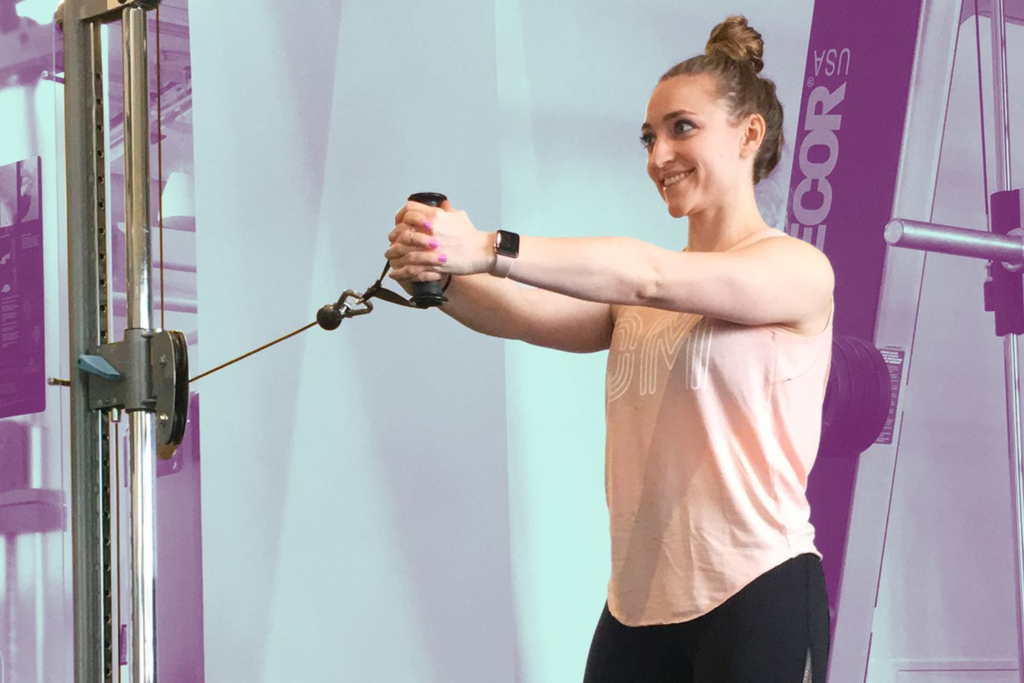Introduction
The Pallof Press is a simple yet highly effective exercise for building core stability and strength. Unlike traditional ab exercises that often focus on flexion and extension, the Pallof Press targets anti-rotation, making it an essential movement for anyone looking to enhance their core stability, balance, and overall athletic performance. In this article, we’ll explore what the Pallof Press is, how to perform it correctly, its benefits, and variations to incorporate into your workout routine.
What is the Pallof Press?
Named after physical therapist John Pallof, the Pallof Press is an anti-rotation exercise that engages the entire core, including the obliques, rectus abdominis, transverse abdominis, and lower back muscles. The exercise involves resisting rotational forces, which helps to improve core stability and protect the spine from injury.
How to Perform the Pallof Press
Equipment Needed:
- Resistance band or cable machine
Steps to Perform the Pallof Press:
- Setup: Attach a resistance band to a stable anchor point at chest height. If using a cable machine, adjust the pulley to the same height.
- Starting Position: Stand perpendicular to the anchor point with your feet shoulder-width apart. Hold the band or cable handle with both hands, keeping your arms close to your chest.
- Press: Step away from the anchor point to create tension in the band or cable. Slowly press the handle straight out in front of you, extending your arms fully. Your core should be engaged, and your body should resist the pull of the band or cable.
- Hold: Hold the extended position for a few seconds, maintaining tension in your core.
- Return: Slowly bring the handle back to your chest while maintaining control and core engagement.
- Reps and Sets: Perform 10-15 repetitions on each side for 2-3 sets.

Benefits of the Pallof Press
- Improves Core Stability: The primary benefit of the Pallof Press is its ability to enhance core stability by training the muscles to resist rotation.
- Enhances Balance and Coordination: By engaging multiple muscle groups, the Pallof Press helps improve balance and coordination, which are essential for athletic performance.
- Protects the Spine: Strengthening the core muscles through anti-rotation exercises like the Pallof Press can reduce the risk of lower back injuries.
- Versatile and Accessible: The Pallof Press can be performed with minimal equipment, making it easy to incorporate into any workout routine, whether at the gym or at home.
Pallof Press Variations
- Half-Kneeling Pallof Press: Perform the exercise in a half-kneeling position (one knee on the ground) to increase the challenge to your core and lower body stability.
- Pallof Press with Overhead Reach: After pressing the band or cable out in front of you, raise your arms overhead to add an additional challenge to your shoulders and core.
- Pallof Press Walkout: After pressing out, take a few steps sideways while maintaining the extended position. This adds a dynamic element to the exercise, further challenging your core stability.
- Banded Pallof Press Hold: Instead of performing reps, hold the extended position for a longer duration (15-30 seconds) to build endurance in your core muscles.
Common Mistakes to Avoid
- Losing Core Engagement: Ensure your core remains engaged throughout the exercise to avoid placing undue stress on your lower back.
- Leaning or Twisting: Your body should remain upright and resist any twisting motion as you press the band or cable forward.
- Using Too Much Resistance: Start with a lighter resistance band or lower weight on the cable machine to focus on form and control before progressing to heavier loads.

Conclusion
The Pallof Press is an effective exercise for building core stability, improving balance, and protecting your spine from injury. By incorporating this exercise into your routine, you can enhance your overall strength and athletic performance. Whether you’re a beginner or an advanced athlete, the Pallof Press offers versatility and scalability to suit your fitness level. Give it a try and experience the benefits of a stronger, more stable core.





